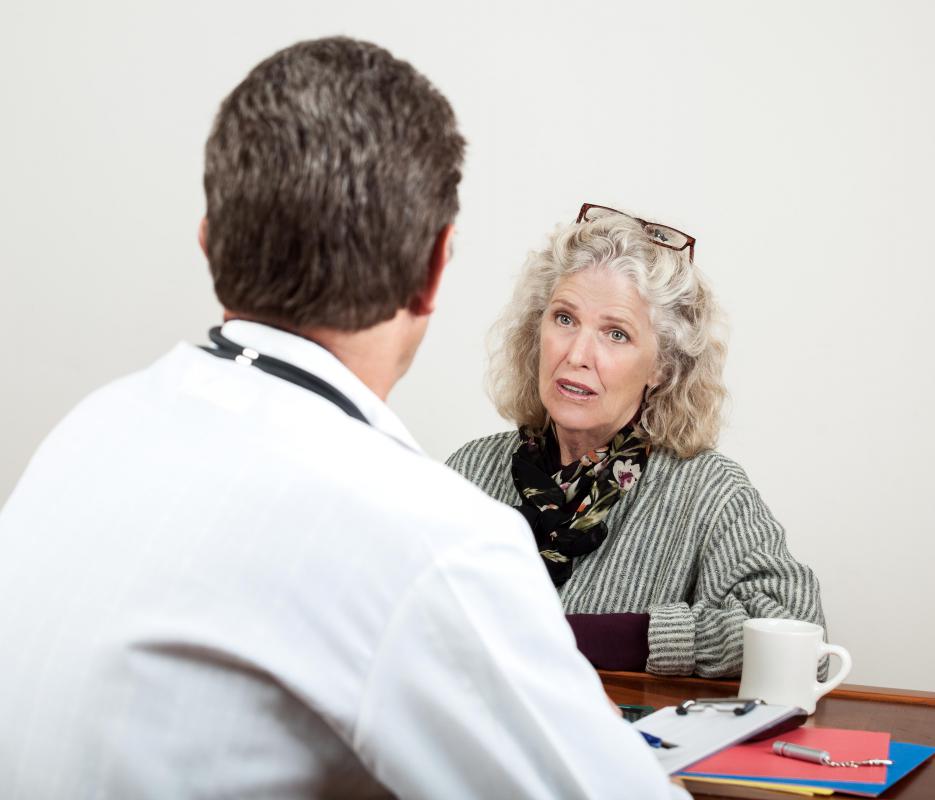At WiseGEEK, we're committed to delivering accurate, trustworthy information. Our expert-authored content is rigorously fact-checked and sourced from credible authorities. Discover how we uphold the highest standards in providing you with reliable knowledge.
What Is the Connection between Menopause and Joint Pain?
Many factors influence the connection between menopause and joint pain, and more than 50 percent of postmenopausal women experience joint pain. Most of the pain is in the knees, elbows, and shoulders, but some women experience pain in their hips, wrists, and lower back. Some experts believe the decrease in the production of estrogen and progesterone by the ovaries contributes to the joint pain, but others are uncertain of the true cause. Practitioners advise menopausal women to exercise to keep the joints limber, control their weight to lessen joint strain, and consult their doctor, because joint pain may be a symptom of a greater problem. Women may use different treatments for the pain, including drugs and holistic cures.
In one American medical study, more women listed joint pain as a problem during menopause than the common menopausal symptoms of night sweats and hot flashes. In the same study, women reported that the joint pain continued after the completion of the menopause cycle. This postmenopausal joint pain can last for years. A Canadian study showed that 62 percent of arthritis sufferers who complain of joint pain are women.

Although some doctors question the direct association of menopause and joint pain, most theorize that the reduction of estrogen and progesterone in the system is the cause for the joint pain in perimenopausal, menopausal, and postmenopausal women. The perimenopausal period occurs directly before menopause begins, and the postmenopausal period happens after menopause is complete. Typically, people use the term menopause to refer to all three cycles. The three menopausal periods can last for years; therefore, it is important for a woman to seek medical attention at the first signs of menopause and joint pain.

Other medical conditions may cause joint pain. Some of these conditions are kidney problems, osteoporosis, and joint damage. There are causes of decreased production of estrogen and progesterone other than menopause. Generally, these conditions cause the ovaries to stop functioning and may include chemotherapy, hysterectomy or bilateral oophorectomy, or ovary dysfunction.

Treatments for women suffering from menopause and joint pain vary. Some people seek holistic treatments, such as nutritional diets, exercise, and sleep therapy. Other women use drug therapies, such as taking non-steroid anti-inflammatory drug (NSAID)–type pain relievers. There are pros and cons to each type of treatment, and women should consult professional caregivers instead of self-medicating themselves. Sometimes joint pain is a symptom of a serious health problem, including cancer, kidney failure, and bone diseases.
Most practitioners advise women who suffer from both menopause and joint pain to reduce joint stress. Often this includes exercises, weight control, and avoiding tasks that cause repetitive strain on the joints. Frequently, menopausal women gain weight during this time. This may be due to a combination of factors, such as hormone changes and reduced physical activity. Although many women experience menopause and joint pain, nearly 40 percent of menopausal women do not find it a significant problem.
AS FEATURED ON:
AS FEATURED ON:













Discuss this Article
Post your comments